In recent years, 3D animation has emerged as a powerful tool for teaching and transforming complex information into a digestible and compelling visual. Animation brings a case to life and can have a greater impact on juries, judges, and tribunals than still images by comparison. Based on years of experience in the courtroom, we have developed five tips and considerations to optimize the use of this invaluable litigation tool.
1. Start Your Animation Early
Waiting until the last minute to begin animation development in order to reduce trial costs is a common yet misguided approach. This strategy can actually decrease the impact an animation would have on overall case value. Here are three reasons to start your animation early:
CASE THEORY
Animations are often perceived as a component of trial alone. While animations may play a significant part in the trial strategy, they have a more critical role earlier in the case lifecycle—including the development of case theory.
Although animation is often sought to reinforce case theory, it can also refute it. The objective environment afforded by 3D animation can provide a unique view of key issues not originally seen from a review of documents, reports, or films. These details, both positive and negative, allow a case team to choose the most favorable—and therefore most valuable—case theory.
SETTLEMENT OPPORTUNITY
Beginning the animation process early can also benefit settlement talks. It is no secret that both plaintiff and defense counsel would rather avoid the cost and uncertainty of trial. Revealing an animation can be a powerful method to increase the value of a case in the settlement phase.
Plaintiff settlement packages with animation may increase the frequency of settlements as well as the value, by demonstrating a commitment to the case. Any costs incurred in creating an animation during this phase can usually be added to the settlement agreement.
For example, we created an animation for a plaintiff attorney in a product liability case involving a small construction vehicle. It demonstrated two things during settlement talks: the mechanism of injury and an alternative design that would prevent injuries. This animation was presented to opposing counsel and insurance representatives, leading to a healthy settlement and significant cost savings related to expert reports, depositions, travel, and trial overhead.
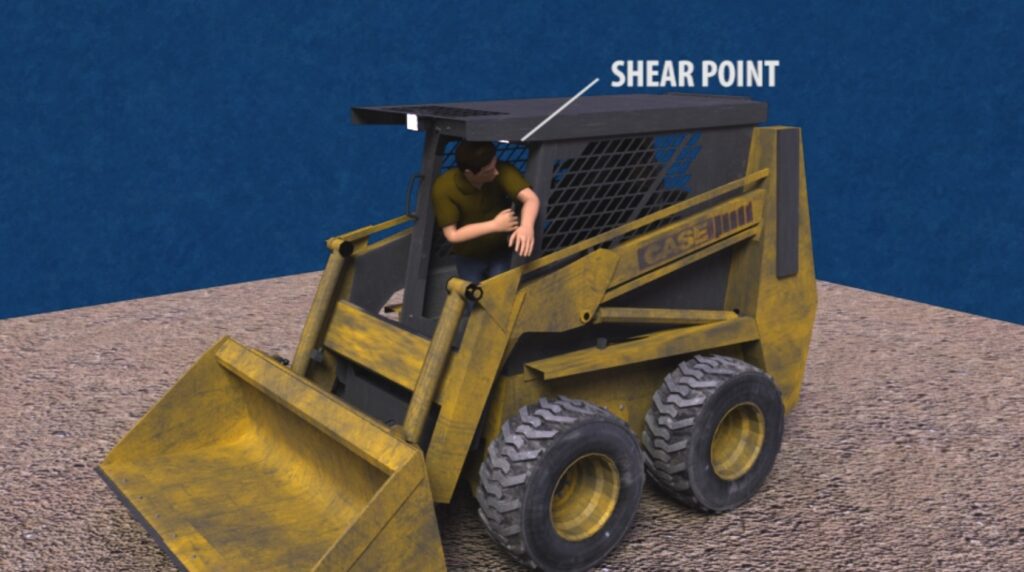
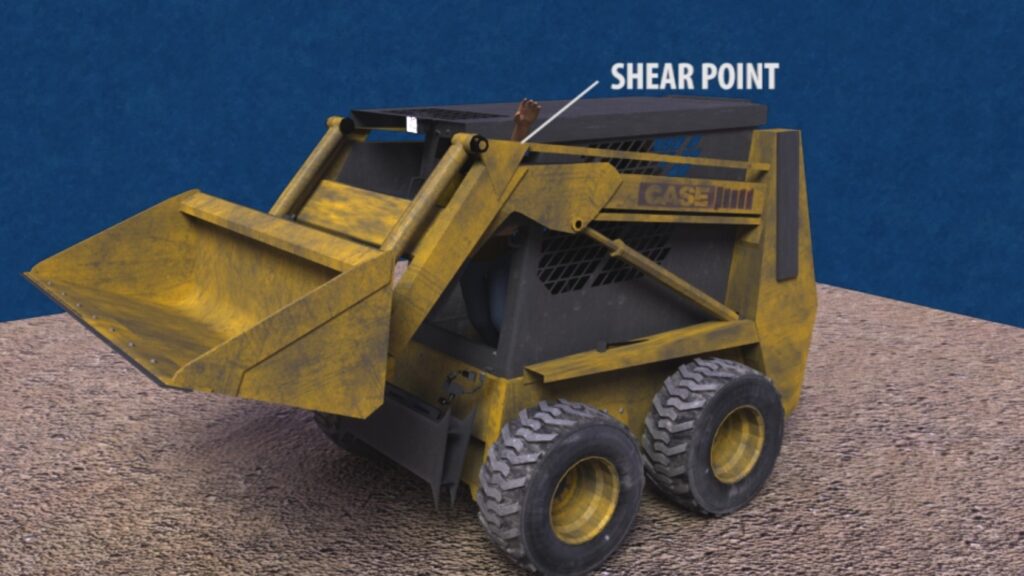
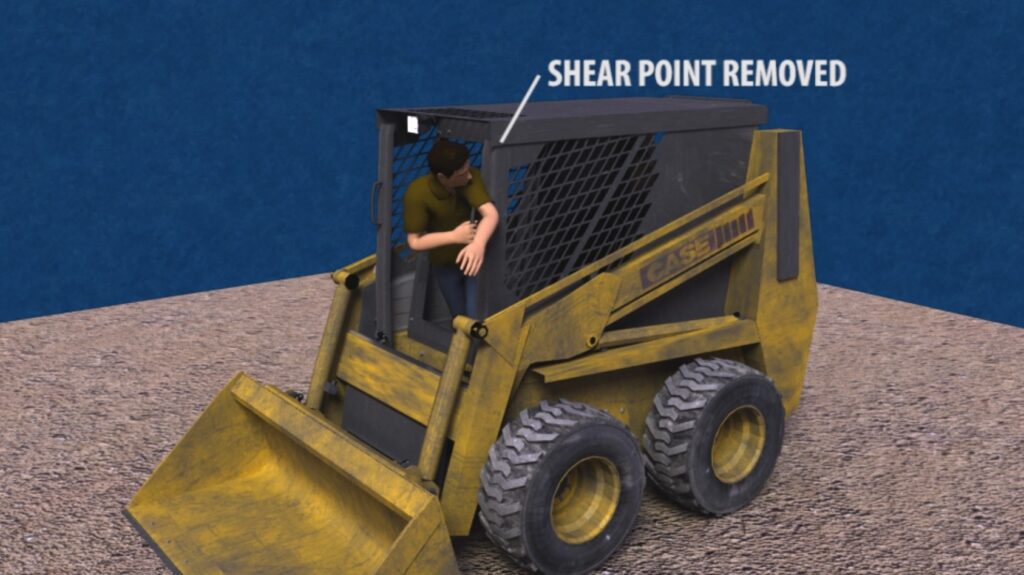
Still frames from an animation used in a product liability case.
CREATIVE PROCESS
One final reason to start early is that effective animations simply take time to develop. Animators are talented artists who are tasked with distilling a lot of information into an effective, observable message. Complex pieces often take weeks to complete, and waiting until the eve of trial can limit (or eliminate) the designer’s ability to create a compelling animation. You could also incur rush fees and increase the cost of your overall case strategy.
2. Stay Involved in Animation Development
Building a case requires the input and attention of key stakeholders. It is important to know that building an animation requires the same level of attention from the same group of people. Stakeholders should stay involved for the entire development process, so it proceeds accurately and optimally.
Sometimes, lead attorneys may allow experts to drive the process. While this is not necessarily a bad practice, experts may lose focus of the audience (a jury, judge, or insurance adjuster), leading to the creation of overly complex animations that are difficult to comprehend. Therefore, although experts should be involved*, it is the key stakeholders’ responsibility to ensure the final product is best suited to the intended viewers. Overseeing this process can be as simple as joining conference calls and reviewing animation drafts.
For example, in a case involving a highly complex chemical process, the team included a well-respected chemical engineer tasked with directing the animation’s creation. It quickly became obvious the expert wanted the animation to contain a level of detail too confusing for the audience to easily digest. Fortunately, the lead attorney was involved from the start and requested to make the animation simpler. Our designer worked with the entire case team to develop a solution that demonstrated the chemical process in a clearer fashion, using cartoon lines and shading as shown below.
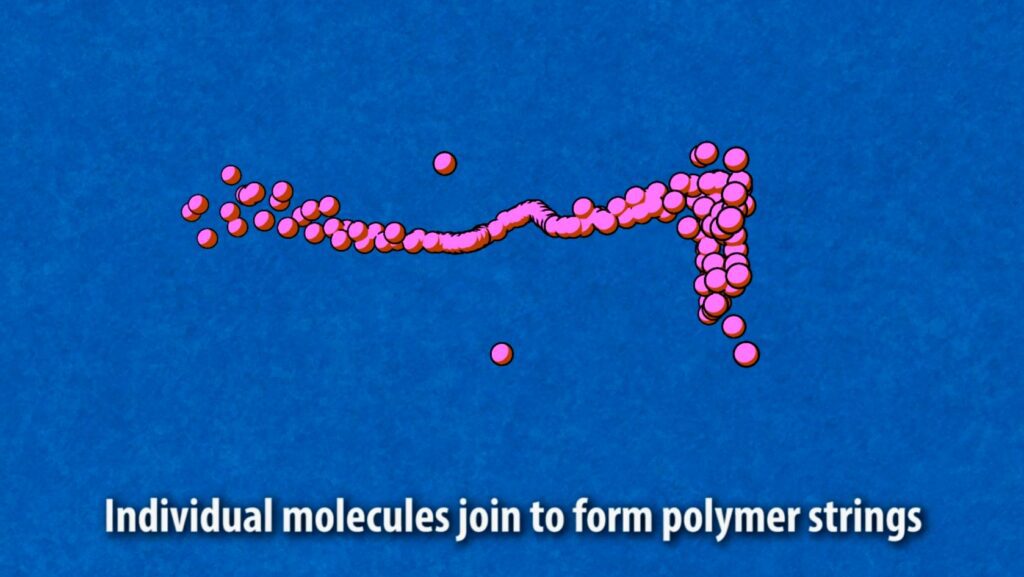
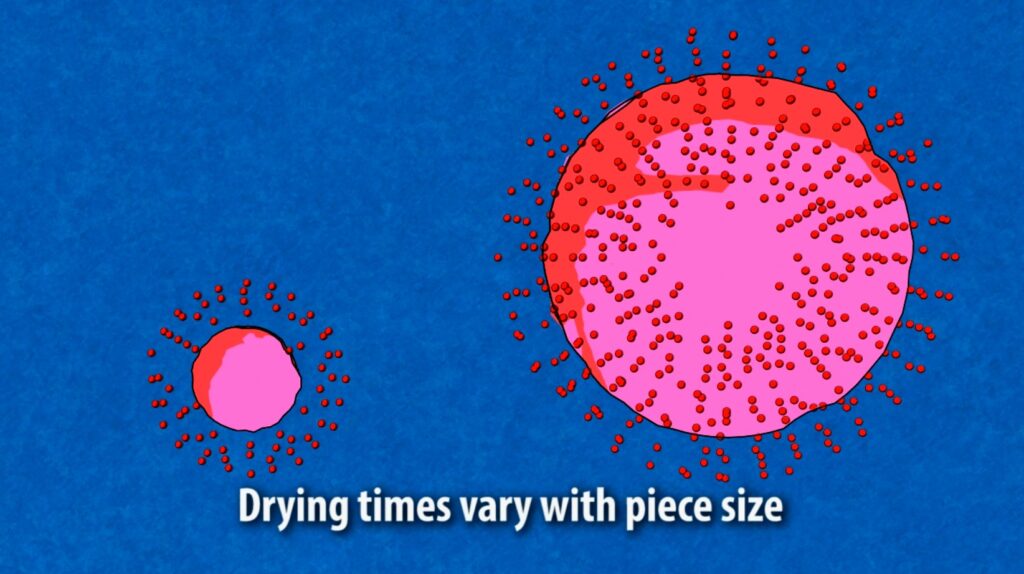
Still frames from an animation used to simplify a complex chemical process.
*While it is not best practice to give your expert complete reign over animation development, their involvement is crucial to success. Animations can only be admitted into evidence if validated by an expert or witness. A graphic designer or animator can only testify to the creation of the animation, not to the content.
3. Understand the 3D Animation Process
Rome was not built in a day, and the same adage applies to a good animation. We have already addressed the importance of starting early and how it affects overall quality. Understanding the full animation process helps attorneys appreciate and plan the project’s timeline. There are generally five steps involved with animation production:
INFORMATION GATHERING
This is obviously a crucial step and the foundation of the animation project. The key stakeholders present the initial case theory to the design team and then collectively develop ideas. The animator will review all information and determine the best way to convey the case theory.
DESIGN
This is where the ideas come together. The animator consolidates all details from the information-gathering phase into a visual presentation for the case team (often a storyboard). It is important for the key stakeholders to carefully review these design concepts and make changes as necessary. Revisions at this stage are virtually cost-free.
MODELING
In this stage, the animator begins work on what will become the final deliverable. The most tedious and time-consuming phase is when the animator creates the product or scene to be used in the animation. Models can be created by eye or by using technical drawings and are then given color, texture, sheen, etc. Depending on the complexity of the scene, the modeling stage could take weeks to complete.
ANIMATION
This is the stage in which the previously created models begin to “come to life” through movement. Most experienced animators will agree this is the most important stage. The interaction between the models is what will ultimately create a compelling demonstrative.
RENDERING
After all the hands-on work is done, the animator renders the animation. This is a process in which the computer(s) will draw each frame of the animation. While not a labor-intensive process, this stage requires significant computing power. Most animations run at 30 frames per second, meaning a three-minute animation contains 5,400 frames—each drawn by the computer.
In the early stages of computer animation, companies would charge for rendering. Realizing that rendering times can vary depending on the power of the computer, most reputable companies today no longer charge for it.



Still frames of a model in its initial stage or wireframe (left), flat shaded (center) and fully rendered (right).
Once the animation process is complete, drafts are created and sent to the case team. It is very important at this point for stakeholders to review and request revisions promptly. Small revisions may be turned around within days, while major changes could require the process to restart and take weeks to complete.
4. Get the Animation Admitted
If you have gone through the settlement process without a resolution and are headed to trial, it is important to understand that animations must be validated by expert or witness testimony to be admitted into evidence. This validation process begins during animation development. With experts or witnesses involved in the info-gathering stage and draft review, the animator can move forward with confidence.
Failing to gain input from experts or witnesses during the early stages of development could cause significant and costly revisions on the eve of trial. The worst-case scenario would be having the animation thrown out due to lack of authentication.
Animations can fall under two categories: demonstrative and simulation. Most trial animations fall under the former category, as they are used to explain something and educate the audience. Demonstrative animations have an easier path to admissibility and cost much less to create. Animations created as simulations often contain complex data or real-world interactions between objects. Due to their reliance on objective data, simulation animations are more objectionable and viewed with more scrutiny. Courts often require both the expert and the animator to testify on the process and data used, also allowing an opportunity for cross-examination.
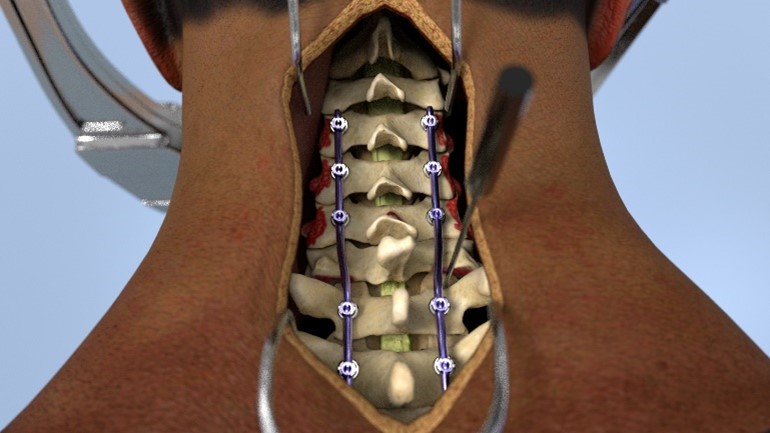
Still frame of an animation used for demonstrative evidence.
5. Control the Cost of 3D Animation
This is a critical question for most attorneys, and it is also the hardest to answer. We know from extensive experience that creating an animation has many moving parts. The time spent on each stage of development can vary greatly from project to project, just as creating a frame for a CGI-animated feature film takes more human and computing hours than a frame of a contemporary animated sitcom.
The following guidelines will help keep the cost of your animation in check, regardless of the subject.
KNOW THE CASE
It sounds simple and obvious, but fully understanding the case as it relates to your strategy is the foundation of the animation. Relaying incorrect information to the designer at this stage can cause costly revisions later in the production process.
PROVIDE SUFFICIENT DETAILS
Experienced animators would rather have too much information about your case than not enough. Remember, animators have different roles on the team. They create a visualization of the subject matter and, therefore, need to view all the information to ensure accuracy.
Attorneys are often reluctant to send a large collection of photos of a scene or product, thinking they will not be of any value to the animator. This could not be more false. To save time and expense in the long run, it is beneficial for animators to see all existing views and details related to what they have been tasked with communicating visually.
CHOOSE FORM OR FUNCTION
The goal of any litigation animation is to inform and convince your audience. The method used to accomplish this can vary. A plaintiff’s attorney representing a client injured in a car accident, intending to engage the jury with a flood of details from the incident, may create a photo-realistic reenactment of the crash scene. On the other hand, a patent defense attorney looking to clearly break down intricate protocols may wish to create a simple, flat-shaded animation.
These two types of animation can vary greatly in terms of time and cost. A photo-realistic animation containing real-life textures, shadows, highlights, shadows, etc. requires more expertise and time to create than a flat-shaded animation, yet both can accomplish their respective goals. It is important to talk with the designer about the goal of the animation at the start of development.
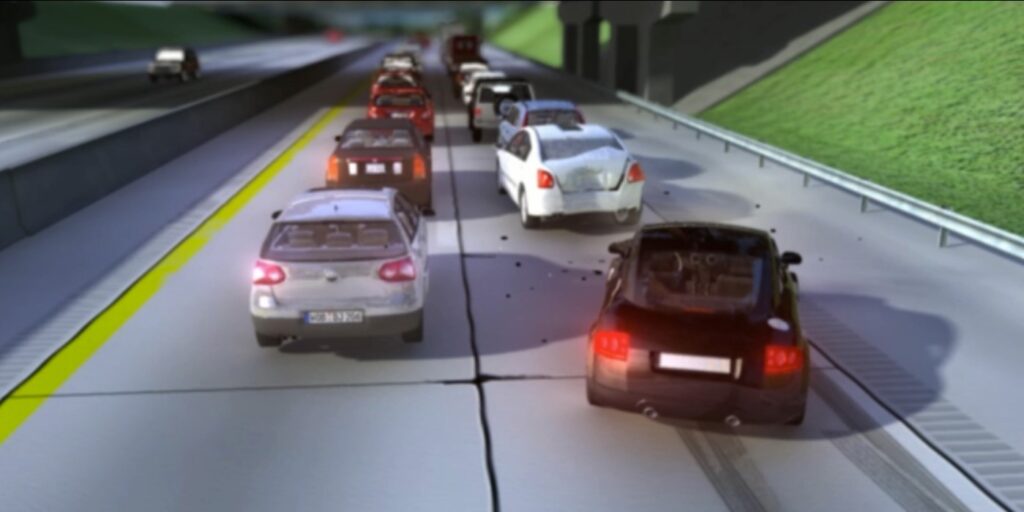
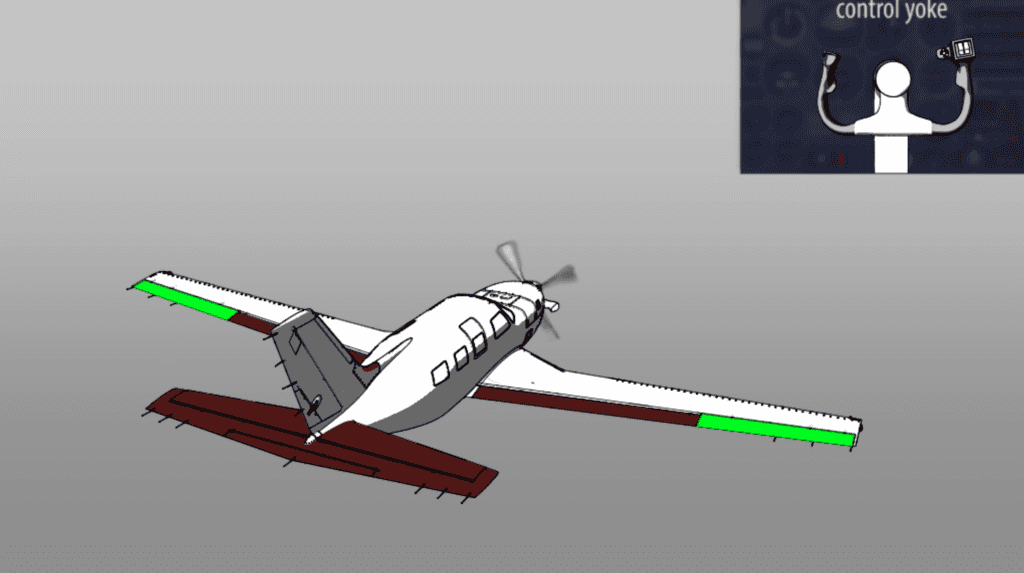
Still frame of a fully shaded animation (left) and a flat-shaded animation (right).
AVOID THE LAST MINUTE
Waiting until two weeks before trial to start an animation can be a costly mistake. Most graphics firms are constantly juggling production schedules to meet client needs. Jumping in and expecting immediate work comes at a high price. Freelancers may be needed along with overtime and weekend work. All of these added costs can double or triple the price of an animation.
In Summary
Initiating a 3D animation development process early in your strategy is pivotal in positioning your case for success. It allows animation to contribute to the formation of a robust case theory, enhances settlement opportunities, and provides ample time for the creative process to unfold. Furthermore, actively participating, understanding the process, and admitting the animation with expert input will make the journey more cost-effective. By adhering to these principles, you will not only control the cost of your 3D animation but also increase its value as a powerful tool, ultimately strengthening and optimizing the final decision in court.




 />i
/>i

